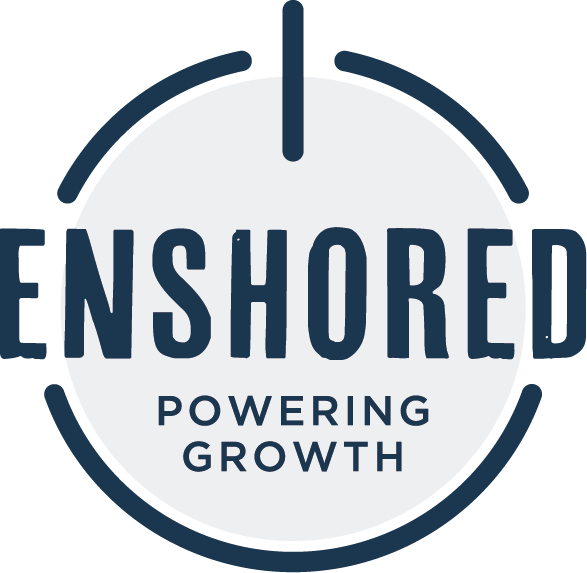Taking too long? Close loading screen.


Not everyone is a numbers person, and not every business is set up to sustainably manage all of their data processing and analysis activities in-house.
In fact, holding on too tightly to these tasks can be the exact bottleneck that prevents your team from scaling. You might be asking yourself: How can I clear out the queue of data processing tasks?
When it comes to cost-effectiveness, consider this: businesses that outsource data entry tasks can reduce operational costs by up to 60%.
By shifting these tasks to specialized BPO providers, companies can focus on core competencies while benefiting from streamlined processes and improved accuracy in data handling. This can lead to significant gains in productivity and profitability.
But that doesn’t have to bring your operations to a halt. Data entry outsourcers can streamline your business and stretch your budget. These third-party data entry solutions improve quality with reduced errors. Learn how to outsource data entry and free up time and resources for businesses of all sizes.
Find the best data outsourcing option by following these important guidelines.
Outsourcing data entry can be a highly cost-effective solution, opening up resources for other business tasks or core business functions.
By delegating data entry tasks to specialized external firms, companies can minimize the need for full-time staff, cutting costs associated with salaries, benefits, and training.
These spared costs can contribute to a budget for outsourced data entry services. That’s why professionals must anticipate the costs of these providers and weigh them against business models and future expenses. Know when cost benefits should manifest and whether they’ll pay short- or long-term dividends.
Calculate Outsourcing Costs
Outsourcing providers typically employ skilled professionals with advanced technology and streamlined processes, resulting in faster turnaround times and fewer errors, making data entry outsourcing a key investment to any business.
Current data entry outsourcing market costs can vary depending on several factors, including the provider’s location, the complexity of the tasks, and the volume of work required. Establish a plan for what type of data entry project you require and look for firms that do this work.
How much does outsourced data entry cost?
On average, costs for basic data entry services range from $5 to $25 per hour. Regions with lower labor costs, such as South Asia or Eastern Europe, may reduce prices to $5 to $10 per hour. In contrast, providers in North America or Western Europe may charge between $20 to $40 per hour for the same services. Keep in mind extra service fees and keep contracts transparent.
Fees may change if the firm charges by project. Small tasks or datasets may cost $50 to $500 in such instances, while larger projects can exceed $1,000, depending on intricacy and turnaround time.
Weigh Cost with BPO Models
Contractors of different business process outsourcing models offer data entry services, and each BPO type affects pricing and procedures. Choosing based on location can manage expectations. Consider the types of outsourcing that prospective firms specialize in to narrow the search for the appropriate provider.
On-shore Outsourcing
This model involves partnering with a provider in your country. Advantages include easier communication and cultural alignment. They may offer prices similar to the rates you’re already familiar with. On-shore outsourcing is ideal for businesses prioritizing data sensitivity and compliance.
Near-shore Outsourcing
This model utilizes providers in neighboring countries, often sharing similar time zones and cultures. It balances cost savings and effective communication, making it suitable for businesses looking for flexibility.
Off-shore Outsourcing
Data entry tasks sourced offshore work with providers in distant countries, typically with significant cost reductions. This approach suits companies needing high volumes of data entry done quickly, provided the two businesses can manage time zone differences effectively.
Hybrid Model
Combining the above approaches, hybrid models allow businesses to distribute tasks based on complexity and cost. For instance, routine tasks can be offshore, while sensitive data entry is handled onshore.
Selecting the right BPO model depends on a company’s specific needs, budget, and desired level of oversight.
Costs may intimidate and confuse, but staying strategic can help professionals stay cost-effective in the search for data entry outsourcing services.
When selecting data entry providers, examine the diverse types and volumes of data and how that affects data entry management.
Assess your data types, volume, and how much online or offline data entry is required. Understand how to implement these types of data, what applies to your specific situation, and how to invoice data entry.
Next, consider the scalability of a provider’s services. A provider should maintain robust measures regardless of data volume fluctuations. Familiarize yourself with access controls to prevent unauthorized personnel from accessing your data and review their incident response plans in case of a breach.
Evaluate the contractor’s employee training programs on data privacy and security practices—they are crucial for maintaining data integrity. Assess their data backup and recovery procedures to minimize disruptions in emergencies. Choosing a provider with solid data security policies will safeguard your information and build trust.
Measure Cost-Effectiveness with Data Entry Outsourcing
Measuring cost-effectiveness with an outsourced data entry provider involves evaluating tangible and intangible factors. Begin by comparing the provider’s pricing model to your internal costs, including salaries, benefits, training, and operational expenses associated with in-house data entry.
Analyze the quality of work by assessing error rates and turnaround times of these experienced professionals. An outsourcing partner that delivers high accuracy promptly may justify a higher price, resulting in greater overall efficiency.
Collect feedback on the provider’s responsiveness and customer service, as these factors can significantly influence long-term productivity and employee satisfaction.
Consider the scalability of the external service providers. Can they manage increased volumes during peak work times without compromising quality? This flexibility can lead to cost savings in the long run.
Lastly, the return on investment (ROI) is calculated by linking cost savings from outsourcing to improved business outcomes, such as increased revenue or reduced operational burdens. By combining these quantitative and qualitative analyses, businesses can make informed decisions on the cost-effectiveness of their outsourced data entry solutions.
Other key factors can also influence pricing and whether a provider is the right fit for a business. As companies increasingly turn to outsourcing for efficiency, understanding these factors is crucial for budget planning and contracting data entry services.
Data security
Security measures should be a top priority for data entry dedicated teams. Encryption methods for storing and transmitting data must comply with relevant regulations, such as GDPR or HIPAA, particularly if handling sensitive information.
Companies must implement rigorous confidentiality and service level agreements (SLAs) to safeguard sensitive information when outsourcing.
Confidentiality agreements should include non-disclosure clauses stipulating that the outsourced team cannot share or utilize the data for purposes outside the agreed tasks.
This agreement should also specify the handling, storage, and disposal methods of sensitive data to mitigate risks.
Transparency
Regarding SLAs, essential measurements include turnaround time, accuracy rates, and performance metrics. These metrics should detail expected completion times for tasks and define acceptable error rates.
Additionally, companies should include provisions for regular audits and performance reviews to ensure compliance with the agreed standards. Penalties for non-compliance should also be established to reinforce accountability.
Effective confidentiality and SLAs protect sensitive information and enhance trust between the company and the outsourced service provider, ensuring a reliable and secure data entry process.
Technological requirements
Data entry service providers require a robust technology infrastructure to effectively manage and process large volumes of data. Key technologies include data management systems for efficient organization and information retrieval.
Optical Character Recognition (OCR) software is crucial for converting printed or handwritten documents into digital formats.
Providers also use advanced spreadsheet software and database applications such as Microsoft Excel or SQL for data manipulation and analysis. Cloud computing technologies offer storage solutions and facilitate secure access to data from anywhere, enhancing collaboration among teams and maximizing operational efficiency for both teams.
Training needs
Data entry outsourcing providers often minimize the need for extensive training requirements within organizations. These external experts typically come equipped with the necessary skills and experience, allowing them to seamlessly integrate into existing workflows.
By utilizing professionals already proficient in data management, companies can avoid the time-consuming task of training in-house staff, which can be both costly and tedious.
Data entry outsourcing providers often have their own training programs, ensuring teams stay updated on the latest tools and technologies. This means organizations can rely on these providers to maintain high accuracy and efficiency standards without investing in continuous employee training.
Customization capabilities
Look for a provider that offers the customization required for the business, company culture and standards, and varying business demands. Outlining specific requirements, such as data formats, volume, and industry-specific needs.
Find data entry companies through online searches, industry forums, or platforms such as Upwork and Freelancer. Check their websites for information on customization options.
A diverse portfolio often indicates the ability to customize services but keep an eye out for previous work in an industry or with projects similar to yours.
Communication and collaboration
As you research and interview potential data entry partners, ask questions. They are specialized teams, so they can help you understand their entry experts and entry operations to help you understand their track records and their dedication to business success.
Detail your plans, points of concern, goals, management processes, and standards, and compare with theirs. This will offer clarity that will help you choose and later communicate effectively with an outsourced data entry provider on their services.
A potential partner should provide accurate data entry services and be reliable in word and deed.
There’s a lot to consider when choosing data entry outsourcing partners, but knowing the many factors to cost efficiency, the demands of the data and data types, the intricacies of business goals and business growth, and the standards of outsourcing providers will empower professionals to tailor the decision to what they need and want best.
By following these steps, you can find a data entry provider that meets your business objectives and enhances your data management through tailored solutions.
If you’re ready to talk about outsourcing data entry, contact our team at Enshored.
Anticipating growth?
Access the tools, tech & team you need to scale globally.

Serious about scaling?
One call is all it takes to know if we’re a fit.
© 2024 Enshored · Privacy · GDPR · California · Cookies